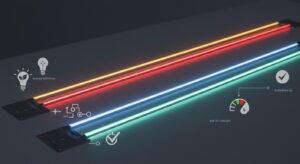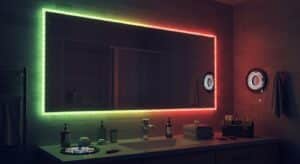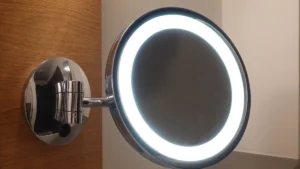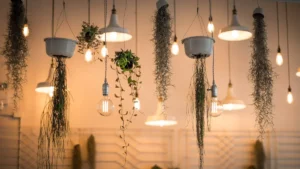
Choosing the right LED lights module can make or break your project. Whether you’re lighting up a sign, a living room, or even a garden, the right module ensures everything looks just right. LED modules are versatile and energy-efficient, making them perfect for applications like signage, architectural lighting, and even swimming pools. So, how do you pick the best one for your needs? Let’s dive in.
Key Takeaways
Know what your project needs before picking an LED module. Think about where it will be used, how bright it should be, and the surroundings.
Pick the correct LED module type for your project. Strong modules last longer, while bendable ones can fit different spaces.
Look at how much power the LED module uses. Make sure it works well and saves energy.
What Are LED Light Modules?
Definition and Key Components
LED light modules are compact, self-contained lighting units designed to deliver efficient and versatile illumination. They consist of several essential components that work together to produce light. Here’s what makes up an LED light module:
Light Emitting Diodes (LEDs): These are the primary light sources, known for their energy efficiency and long lifespan.
Printed Circuit Board (PCB): This serves as the foundation, holding the LEDs and other components in place.
Resistors: These regulate the flow of electricity to ensure the LEDs operate safely.
Optical Lenses: These focus and direct the light, enhancing its brightness and precision.
Each part plays a critical role in ensuring the module performs reliably and efficiently. Whether you’re lighting up a sign or creating accent lighting, these components make LED modules a dependable choice.
Advantages of LED Module Lights
LED module lights offer several benefits that make them stand out from traditional lighting options. Here are the key advantages:
Energy efficiency: They consume about 50% less electricity, helping you save on energy costs.
Extended life: With a lifespan of 30,000–50,000 hours, they last much longer than incandescent bulbs.
Cold temperature operation: They perform exceptionally well in cold environments, like refrigerated spaces.
Durability: Their sturdy design resists breakage and impact damage.
Instant on: They light up immediately without any warm-up time.
Rapid cycling: You can switch them on and off frequently without reducing their lifespan.
Controlability: They work seamlessly with dimming controls, giving you flexibility in lighting.
No IR or UV emissions: They emit minimal infrared or ultraviolet radiation, reducing heat and burn risks.
These advantages of LED module lights make them a smart choice for a wide range of applications. Whether you’re looking for energy savings, durability, or flexibility, LED modules deliver on all fronts.
💡 Tip: When choosing an LED module, consider how these benefits align with your project’s specific needs.
Types of LED Light Modules
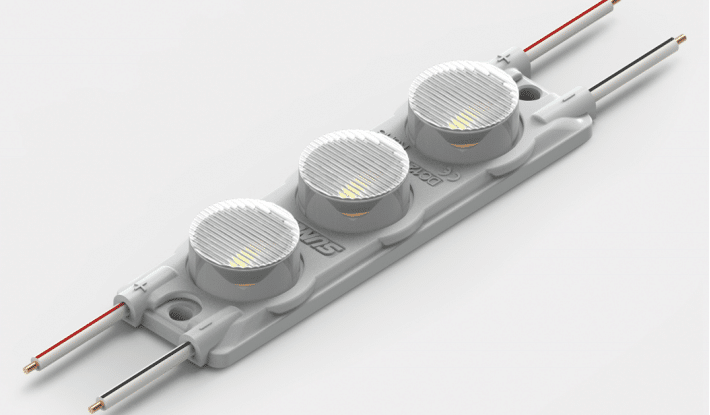
When it comes to LED modules, you’ve got plenty of options to choose from. Each type serves a unique purpose, so understanding their features can help you pick the right one for your project. Let’s break down the different types of LED module lights.
Rigid LED Modules
Rigid LED modules are perfect for projects that need a sturdy and fixed lighting solution. These modules often come in pre-sized panels, making them easy to install. For example, you’ll find rigid panels like the Pro Series available in fixed sizes, such as 8.75″ or 16.75″. They’re ideal for applications like under-cabinet lighting or illuminating large signs.
What’s great about rigid modules is that they often include covers, giving them a polished look and making installation a breeze. Unlike flexible strips, rigid modules don’t require additional components, so you can get started right away.
💡 Tip: If you’re looking for a durable and professional finish, rigid LED modules are a fantastic choice.
Flexible LED Modules
Flexible LED modules are all about versatility. These modules can bend and twist, making them perfect for creative projects. Whether you’re lighting up intricate signage or adding a glow to your car dashboard, flexible modules can adapt to almost any shape. You can even cut them to fit your specific needs, which makes them super customizable.
You’ll often see flexible LED modules used in commercial spaces, automotive displays, and even wearable technology. They’re lightweight and easy to work with, but keep in mind that you might need extra components for installation.
High-Power LED Modules
If brightness is your top priority, high-power LED modules are the way to go. These modules pack a punch, delivering intense light output that’s perfect for outdoor lighting, headlamps, or even flashlights. They’re designed to handle high energy loads while maintaining efficiency, so you get powerful illumination without wasting electricity.
High-power modules are also built to last. Their robust design ensures they can withstand demanding conditions, making them a reliable choice for heavy-duty applications.
Specialty LED Modules (e.g., Waterproof, RGB, and Dimmable)
Specialty LED modules cater to specific needs. For outdoor projects, waterproof modules are a must. They’re built to handle harsh weather, ensuring durability and safety. RGB modules, on the other hand, let you play with colors, making them ideal for decorative lighting. You can even find dimmable modules for spaces where adjustable brightness is key.
Here’s a quick look at some specialty modules:
Type of LED Module | Description |
|---|---|
Waterproof LED Module | Designed for outdoor use, resistant to water and harsh weather. |
RGB LED Module | Offers customizable colors, perfect for creative and decorative lighting. |
Dimmable LED Module | Allows you to adjust brightness levels, ideal for mood lighting. |
🎨 Fun Fact: RGB modules can create millions of color combinations, giving you endless possibilities for your lighting design.
Each of these modules has its own strengths, so think about your project’s specific requirements before making a choice.
How to Choose the Right LED Module
Application and Use Case (e.g., Indoor, Outdoor, Signage, Accent Lighting)
The first step in choosing the right LED module is understanding your project’s application and environment. Are you lighting up a cozy indoor space or creating a bold outdoor display? Indoor LED modules often prioritize high-definition visuals and vibrant colors, while outdoor modules focus on durability and brightness. For example, outdoor signage lighting requires waterproof modules with an IP65 rating or higher to withstand rain and dust.
Here’s a quick comparison:
Feature | Indoor LED Displays | Outdoor LED Displays |
|---|---|---|
Characteristics | High-definition, colorful, surface-mounted | High brightness, waterproof, plug-in lights |
Brightness | Lower brightness, not suitable for outdoor | Higher brightness, suitable for outdoor use |
Waterproofing | May or may not be waterproof | Must be waterproof, designed for outdoor use |
Think about your specific needs. Accent lighting for a living room might require flexible LED modules, while display lighting for a storefront could benefit from rigid or high-power modules.
Brightness and Lumen Output
Brightness plays a huge role in how effective your LED module will be. Measured in lumens, brightness determines how much light the module emits. For outdoor applications, aim for at least 5,000 nits to ensure visibility in direct sunlight. Indoor spaces, on the other hand, can work with lower lumen outputs.
💡 Tip: Always match the brightness level to your environment. Too much brightness indoors can feel harsh, while too little outdoors can make your display invisible.
Color Temperature and Color Rendering Index (CRI)
Color temperature and CRI are key factors to consider when choosing LED modules. Color temperature, measured in Kelvin (K), affects the mood of your lighting. Warm tones (2,700K–3,000K) create a cozy atmosphere, while cooler tones (5,000K–6,500K) are ideal for task lighting.
CRI measures how accurately colors appear under artificial light. A CRI above 90 ensures vibrant and true-to-life colors, which is crucial for professional settings like photography studios or hospitals. For general use, a CRI of 80 is acceptable.
🎨 Fun Fact: High CRI lights make colors pop, perfect for aesthetic-focused environments like hotels or retail stores.
Power Requirements and Energy Efficiency
LED modules are known for their energy efficiency, but you still need to check their power requirements. Look for modules that balance brightness with low energy consumption. High-power modules might need a more robust power source, so ensure your setup can handle it.
⚡ Note: Using energy-efficient LED modules not only saves money but also reduces your carbon footprint.
Size, Form Factor, and Beam Angle
The size and form factor of an LED module influence its application. For example, flexible modules work well for curved displays, while COB modules are great for large screens. Beam angle also matters. A narrow beam focuses light on a specific area, while a wide beam spreads light evenly.
LED Module Type | Characteristics | Suitable Applications |
|---|---|---|
DIP | Waterproof, dustproof, high temperature resistance | Outdoor displays in harsh environments |
SMD | Energy saving, high brightness | Indoor displays |
COB | High flexibility, high integration | Large display screens |
Flexible | Can be bent and stretched | Irregular curved displays |
Durability and Environmental Factors (e.g., Waterproof Ratings)
For outdoor projects, durability is non-negotiable. Look for modules with an IP65 rating or higher to ensure they’re dust-tight and water-resistant. Materials should also resist corrosion, especially in harsh environments.
🌧️ Tip: Check the temperature range and humidity tolerance of your LED module to ensure it performs well in extreme conditions.
Ease of Installation and Maintenance
Ease of installation can save you time and effort. Modular designs allow you to replace individual components without overhauling the entire system. Follow these steps for a smooth setup:
Assess the installation area.
Gather tools and mounting brackets.
Secure the frame and attach the modules.
Connect the wiring and test the setup.
🛠️ Pro Tip: Choose LED modules with user-friendly designs to simplify maintenance and upgrades.
Selecting the Right LED Driver
An LED driver regulates the power supply to your module, ensuring optimal performance. It converts AC to DC and protects the module from power fluctuations. Without the right driver, your LED module could suffer damage or reduced lifespan.
🔌 Reminder: Always pair your LED module with a compatible driver to maximize its efficiency and longevity.
Advancements in LED Technology
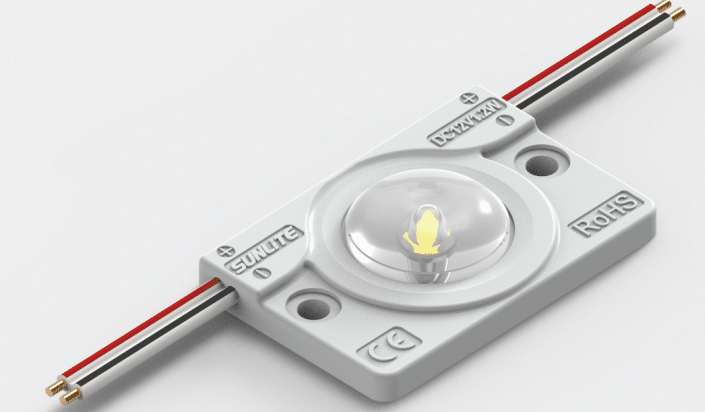
Improved Energy Efficiency
LED module lights have come a long way in energy efficiency. Modern advancements now allow these lights to use energy only when needed. For example, IoT-enabled systems let LED modules adjust their brightness based on real-time data, like occupancy or ambient light levels. This means you’re not wasting energy when no one’s around.
Some LED lights even come with built-in sensors. These sensors create adaptive lighting systems that automatically change brightness or color temperature depending on the environment. Imagine walking into a room, and the lights adjust to match the natural light outside. It’s not just convenient—it’s a smart way to save energy and reduce costs.
🌱 Did You Know? Energy-efficient solutions like LED modules also help the environment by cutting down greenhouse gas emissions and reducing landfill waste.
Smart LED Modules and IoT Integration
Smart LED modules are revolutionizing how you control your lighting. By integrating with IoT systems, these modules offer features like remote dimming, performance monitoring, and even air quality tracking. You can personalize your lighting experience with just a few taps on your smartphone.
These smart modules also communicate with other devices in your home. For instance, they can sync with your thermostat to create the perfect ambiance while saving energy. Whether it’s for display lighting or home automation, smart LED modules make your life easier and more efficient.
Enhanced Lifespan and Reliability
LED module lights are built to last. Thanks to innovations in thermal management, like advanced heat sinks and conductive materials, these modules stay cool and efficient. Overheating is one of the main reasons lights fail, but modern designs address this issue head-on.
Improved energy efficiency also plays a role in extending the lifespan of LED modules. By generating less heat, these lights experience less wear and tear. This means you’ll spend less time replacing lights and more time enjoying their benefits.
Innovations in Color Control and Customization
One of the coolest advancements in LED technology is color control. Human-centric lighting (HCL) mimics natural light patterns, helping you stay productive during the day and relaxed at night. Some LED modules even let you customize brightness and color temperature to suit your mood or activity.
For example, you can set warm tones for a cozy evening or cooler tones for focused work. This level of customization makes LED module lights perfect for both homes and workplaces. It’s all about creating the right atmosphere with just a few adjustments.
Choosing the right LED module doesn’t have to feel overwhelming. Start by identifying your project’s application—whether it’s indoor accent lighting or an outdoor display. Match the brightness, size, and color temperature to your needs. Don’t forget to check power requirements and opt for modules with easy installation features.
Aligning the module with your project’s specific requirements ensures optimal performance and longevity. Whether you need waterproof lights for outdoor use or dimmable options for mood lighting, there’s a solution for every scenario.
Advancements in LED technology, like smart controls and improved energy efficiency, make it easier than ever to future-proof your lighting setup. Take advantage of these innovations to create a system that’s both functional and sustainable.
🛠️ Pro Tip: Create a checklist of your project’s needs before purchasing. Include factors like brightness, beam angle, and installation environment to avoid common mistakes.
FAQ
What is the lifespan of an LED light module?
Most LED modules last between 30,000 and 50,000 hours. That’s years of reliable use, depending on how often you use them daily.
Can LED modules be used outdoors?
Yes, but choose waterproof modules with an IP65 rating or higher. These handle rain, dust, and other outdoor conditions without issues.
How do I know which LED driver to use?
Check the module’s voltage and current requirements. Match these with a compatible driver to ensure safe and efficient operation.
💡 Tip: Always consult the product manual for specific driver recommendations.
See Also
Key Tips for Selecting the Perfect LED Sign Module
Guidelines for Picking the Ideal LED Strip Lights
The Advantages of Using LED Modules for Signage
